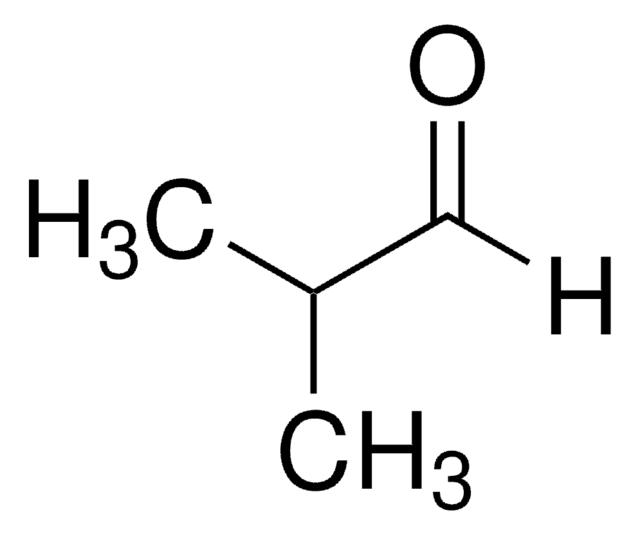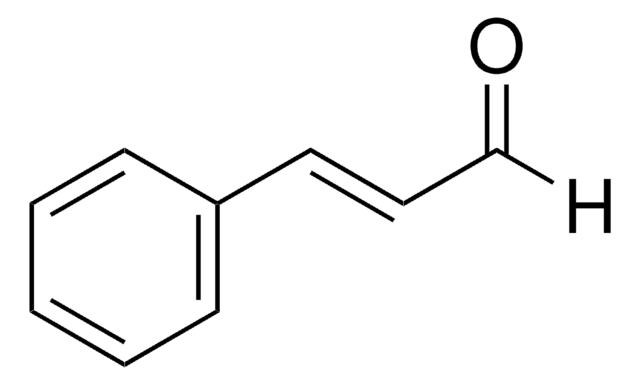Wichtige Dokumente
W332615
Aceton
natural, ≥97%
About This Item
Empfohlene Produkte
Qualität
natural
Qualitätsniveau
Einhaltung gesetzlicher Vorschriften
FDA 21 CFR 117
Dampfdichte
2 (vs air)
Dampfdruck
184 mmHg ( 20 °C)
Assay
≥97%
Form
liquid
Expl.-Gr.
13.2 %
Grünere Alternativprodukt-Eigenschaften
Less Hazardous Chemical Syntheses
Use of Renewable Feedstocks
Learn more about the Principles of Green Chemistry.
sustainability
Greener Alternative Product
Farbe
clear colorless
Brechungsindex
n20/D 1.359 (lit.)
bp
56 °C/760 mmHg (lit.)
mp (Schmelzpunkt)
−94 °C (lit.)
Dichte
0.791 g/mL at 25 °C (lit.)
Anwendung(en)
flavors and fragrances
Dokumentation
see Safety & Documentation for available documents
Nahrungsmittelallergen
no known allergens
Format
neat
Grünere Alternativprodukt-Kategorie
, Aligned
Organoleptisch
apple; ethereal
SMILES String
CC(C)=O
InChI
1S/C3H6O/c1-3(2)4/h1-2H3
InChIKey
CSCPPACGZOOCGX-UHFFFAOYSA-N
Suchen Sie nach ähnlichen Produkten? Aufrufen Leitfaden zum Produktvergleich
Allgemeine Beschreibung
Anwendung
Haftungsausschluss
Signalwort
Danger
H-Sätze
Gefahreneinstufungen
Eye Irrit. 2 - Flam. Liq. 2 - STOT SE 3
Zielorgane
Central nervous system
Zusätzliche Gefahrenhinweise
Lagerklassenschlüssel
3 - Flammable liquids
WGK
WGK 1
Flammpunkt (°F)
1.4 °F - closed cup
Flammpunkt (°C)
-17.0 °C - closed cup
Persönliche Schutzausrüstung
Eyeshields, Faceshields, Gloves
Hier finden Sie alle aktuellen Versionen:
Besitzen Sie dieses Produkt bereits?
In der Dokumentenbibliothek finden Sie die Dokumentation zu den Produkten, die Sie kürzlich erworben haben.
Kunden haben sich ebenfalls angesehen
Unser Team von Wissenschaftlern verfügt über Erfahrung in allen Forschungsbereichen einschließlich Life Science, Materialwissenschaften, chemischer Synthese, Chromatographie, Analytik und vielen mehr..
Setzen Sie sich mit dem technischen Dienst in Verbindung.




